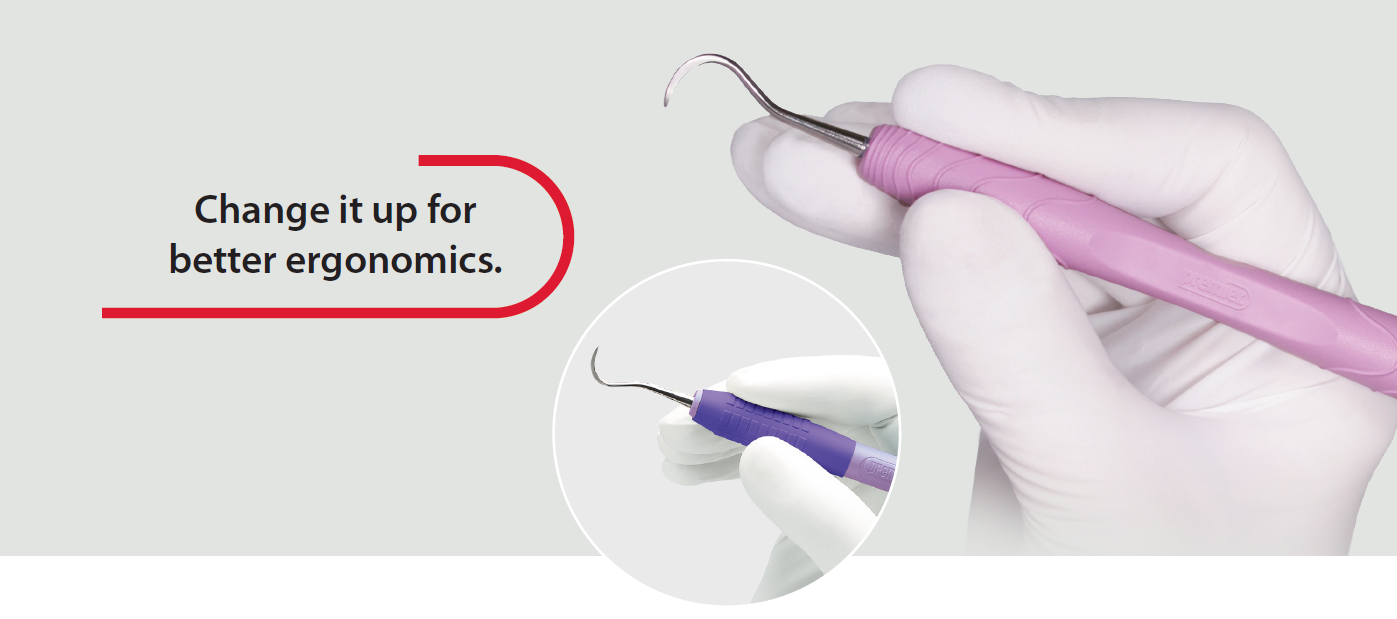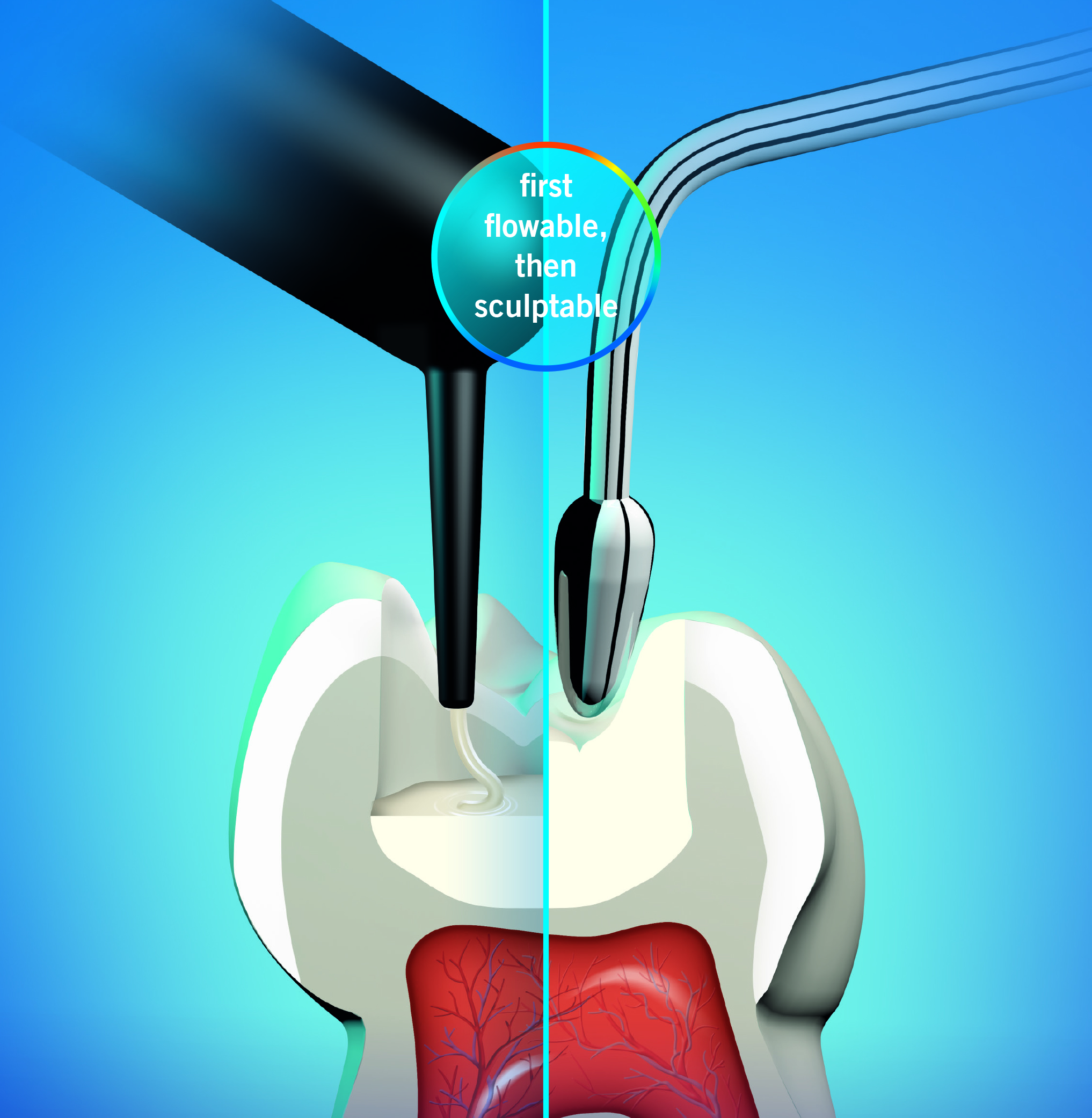Simplifying Cementation True simplification is often easier said than done, particularly for complex procedures such…

Change it up for better ergonomics
Maintaining sharp instruments reduces hand fatigue and lessens patient and operator chair time. Using double-ended instruments with precise alignment of the working end to the shank facilitates better adaptation and positioning on the tooth prior to activation. The style of the instrument shank also improves adaptation and maintains wrist neutrality. Choosing instrument handles with a larger diameter and lighter weight improves ergonomics and alleviates pinch force demanded during repetitive working strokes.
Even if you have checked-off all of the key tips above, the repeated regularity of the operator’s grip can lead to musculoskeletal disorders unless other features are considered. A majority of quality manufacturers of hand scalers and curettes offer variations in handle diameter, weight and textures. Experts conclude that by alternating handle diameters and designs while performing similar procedures further reduce the risk of hand fatigue and chronic musculoskeletal disorders.1, 2 , 3
Instrument set-ups used for diagnostic assessment, periodontal debridement and/or scaling and root planing should contain a diversified choice of handle styles and textures. This has provided the clinician with the opportunity to rest different muscles and tendons within the same procedure. These variations are achieved by using a larger handle diameter (considered “ergonomic”) as well as different surface textures and gram weight. Manufacturers are giving greater importance in developing a wider assortment of handle shapes to accommodate the unique characteristics of individual clinicians. The physical impact that this plays in alleviating fatigue is consequential – a shifting handle changes the intensity of the grip. Therefore, the operator encounters less hand and wrist fatigue while applying significant lateral force against the working surfaces.
References
1. Simmer-Beck M, Branson BG. “An evidence-based review of ergonomic features of dental hygiene.” Work 2010; 35: 477-475.
2. Dong H, Barr A, Loomer P, Laroche C, Young E. Rempel D. “The effects of periodontal instrument handle design on hand muscle load and pinch force.” J Am Dent Assoc. 2006; 137: 1123-1130.
3. Walsh M., Leonardi Darby M “Dental Hygiene E Book: Theory and Practice 4th Edition” Elsevier Health Science, April 15, 2014, page 146



